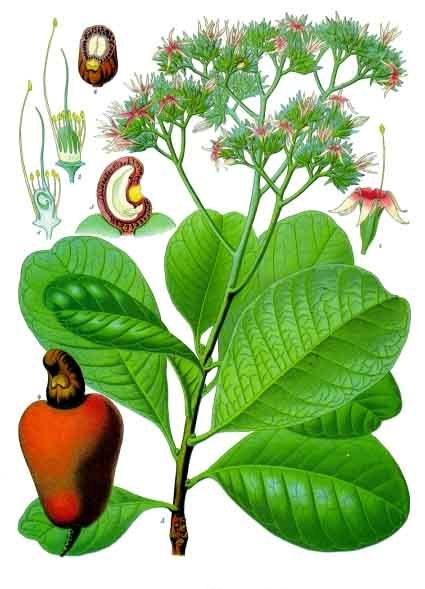The Portuguese introduced the cashew (Anacardium occidentale) from Brazil to India in the 1560s, and by the 1570s it was being grown in gardens in Cochin along the Malabar coast and Goa. From India, its cultivation spread across tropical Asia and to Africa, and by the 19th century, cashews had become widespread as volunteers across all the countries ringing the Indian Ocean. The largest concentrations were found in Mozambique, Madagascar, and India by the mid-20th century.
The Spanish carried guava (Psidium guajava) from the West Indies to the Philippines in the 1500s, and from whence it was dispersed to China and then into India and Indonesia by the early seventeenth century. It rapidly became naturalized across most of the tropical and subtropical world. Wilson Popenoe, in “New Crops for the New World,” termed it “The Ubiquitous Guava” and remarked that “This is the ugly duckling of its tribe. The bush is so common throughout tropical America as to be a weed in many places, and it takes a very courageous soul to go into ecstasies over the merits of the fruit”.
The Spaniards introduced papaya (Carica papaya) from Mesoamerica to the Caribbean in the early 1500s. Seeds of papaya were taken to Panama and then the Dominican Republic before 1525 and its cultivation spread quickly to warm elevations throughout South and Central America, southern Mexico, the West Indies, the Bahamas, and Bermuda. One of the earliest European depictions of papaya is in a manuscript dating from about 1582 entitled Histoire naturelle des Indes. In one illustration captioned “The manner and style of gardening and planting of the Indians”, indigenous people are shown cultivating papaya, along with a multi-eared maize, a cucurbit vine bearing many large round fruits, two bean plants climbing on a living stake, capsicum pepper, and a pineapple.
The Spanish also carried papaya seeds to the Philippines about 1550 and from there it found its way to Malacca and India by the middle of the 16th century. Papaya was also distributed widely in Africa during the European colonial period by the Portuguese, Dutch, Danish, English, and French. By the mid-17th century, papaya was common across all the tropics. It was introduced to Hawaii in the 1800s.
When Columbus arrived in the New World, he found pineapple (Ananas comosus) growing all over the Caribbean, but it’s probable origin was in South America’s Parana Paraguay River basin. The first illustration and description of the pineapple was made in 1535 by Gonzalo Fernandez de Oviedo y Valdéz, in La Historia General y Natural de la Indias, Seville. The pineapple was widely dispersed by the early Portuguese and Dutch merchants sailing around Africa to Indian Ocean ports; it was introduced to Africa and reached southern India by 1550 and by the end of the 16th century had been taken to the Philippines, Java, and China. By 1700, pineapple culture was well established in St. Helena, Madagascar, Reunion, Mauritius, Java, India, Thailand, Nepal, Burma, Malaya, Philippines, Formosa, and China. It was introduced to France from French Guiana in 1820 and subsequently became important in greenhouse cultivation across all of Europe.
Illustration: The cashew, Anacardium occidentale, from Köhler’s Medicinal Plants (1887)
Bibliography:
Chávez-Pesqueira, M and Núñez-Farfán, J. (2017) Domestication and Genetics of Papaya: A Review. Frontiers in Ecology and Evolution 5:155-165.
Hancock, J. F. (2012) World agriculture before and after 1492: The legacy of the Columbian Exchange. Springer
Janick, J. (2013) Development of new world crops by indigenous Americans. HortScience 48 (4): 406-412.
Jiang, Y. (2021) A global history of the pineapple. https://storymaps.arcgis.com/stories/fd88a46oa28343ccao206dbfa2fode27
Janick, J. (2013) Development of new world crops by indigenous Americans. HortScience 48 (4): 406-412.
Ruehle, G.D. (1948) The common guava: A neglected fruit with a promising future Economic Botany 2(3): pp. 306-325. Sauer, J. D. (1993). Historical geography of crop plants: a select roster. CRC press.
